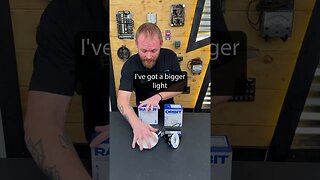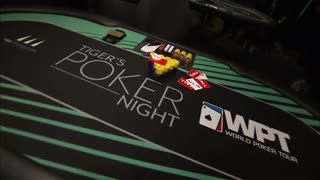Let's Talk About COMBINATION Circuits: Voltage, Current, Resistance, and Power
Join this channel to get access to perks:
https://www.youtube.com/channel/UCB3jUEyCLRbCw7QED0vnXYg/join
We have talked about series and parallel circuits. But have you ever wondered how a series circuit works or what it even is? In today’s episode of Electrician U, Dustin covers part 3 of our topic on circuits- Combination Circuits!
🤘⚡️MEMBERSHIP⚡️🤘
JOIN ELECTRICIAN U - become a member and get:
FREE Continuing Education every year
FREE Practice Exams
FREE Monthly Video Courses
FREE Weekly Live Instructor-Led Classes
FREE Monthly Educational Newsletter
Premium Members-Only Content
Private Discord Channel
Monthly Members-Only Discord Chats
Sign up here --- https://www.electricianu.com/electrician-u-membership/
🎧🎹MUSIC AND VIDEO:🎹🎧
https://www.facebook.com/descantmv
🎬✍️ART AND ILLUSTRATION:✍️🎬
https://www.daverussoart.com
A combination circuit is simply a circuit that has properties of both series circuits and parallel circuits within it. And, remembering that trying to figure out values for Voltage, Amperage, Resistance, and Power each require different formulas depending on what type of circuit it is. So, the easiest way to calculate values for these in a Combination Circuit is to simply start adding all the groupings of parallel circuits resistances together (this will need to be done a few times depending on how many there are) until we are left with a simple series circuit!
Let’s review the rules. Voltage- in a series circuit voltage is dropped across each resistance while in a parallel circuit it’s constant. Current- in a series circuit current is constant but is proportional to the resistance in a parallel circuit. Resistance- in a series circuit resistance is the sum of all the resistances while in a parallel circuit it is the inverse. The formula for wattage in a series circuit Pt=I squared x Rt and in a parallel circuit its P=E squared/Rt.
Let’s do one. Say we have a 100v power source and a combination circuit of 7 loads with the following resistances- R1-1, R2-2, R3-3, R4-4, R5-4, R6-3, R7-2. R6 & R7 are in parallel with each other, R4 & R5 are in parallel with each other, and those 4 are in parallel with R3. We will add R4 & R5, R6 & R7, and then add those together and then add it to R3. Since each set has only 2 resistances, we can use the product over sum method. Adding R4 & R5 we wind up with 1.7 ohms. Adding R6 & R7 we end up with 1.2 ohms and adding those together we have 2.9 ohms. Now we can add R3 and R4567 and have an end result of 1.18 ohms! Now we have 3 loads in series with one another and can complete our calculations!
The total resistance of our circuit is the sum of all the resistances- 1 + 1.18 + 3= 5.18 ohms. The total amperage of our circuit is the voltage divided by the total resistance- 100/5.18 ohms or 19.3 amps. Voltage is dropped across each load and is equal to the source voltage. The formula is amperage multiplied by the resistance = voltage. R1- 19.3 x 1= 19.3v. R2- 19.3 x 1.18= 22.8v. R3- 19.3 x 3= 57.9v. Add those together and we have 100v or our source voltage! Lastly, we have the power to work out. Amperage x the voltage of each load = the power consumption of each and we would add those 3 values to get our total circuit power. P1- 19.3 x 19.3= 372.5w. P2- 19.3 x 22.8= 440w. P3- 19.3 x 57.9= 1117.5w. And our total power for the entire circuit is the additive of these. 372.5w+440w+1117.5W=1930w.
We hope this has been helpful in understanding how combination circuits work. Make sure to check out the other 2 videos for Series Circuits and Parallel Circuits! Both are super helpful in understanding how each one works and how they come together in a Combination Circuit! Is there a topic you would like to see discussed here on Electrician U? Leave us a comment in the comments section and let us know. Please continue to follow Dustin Stelzer and Electrician U as we are constantly updating our content to assist our followers in becoming the best electricians that they can be.
#electrician #electrical #electricity #parallel #circuit #voltage #current #resistance #power
-
 0:50
0:50
Electrician U
5 months agoWhat Are Lumens?
11.4K4 -
 8:33
8:33
MichaelBisping
1 day agoBISPING Reacts: "Tyson Fury COULDN'T Keep The Pace!" | Tyson Fury vs Oleksandr Usyk Reaction
39.6K17 -
 9:56
9:56
Misha Petrov
15 hours agoTragic Leftist Transformations
48.3K50 -
 31:48
31:48
CarlCrusher
15 hours agoCurse of the Skinwalker | The Ancient Mystery of Magic Mesa - Full Documentary | Part 2
45.3K22 -
 1:38
1:38
AnthiBozoviti
22 hours agoImprovisation on Ancient Greek Lyre | Anthi Bozoviti
35.7K21 -
 LIVE
LIVE
World Poker Tour
27 days agoWPT Live!
91 watching -
 25:30
25:30
GEN
2 days ago $0.03 earnedWhat Happens When a City Decriminalizes All Drugs?
52.3K147 -
 LIVE
LIVE
Major League Fishing
3 days agoLIVE Tackle Warehouse Invitationals, Heavy Hitters, Day 2
82 watching -
 37:24
37:24
Standpoint with Gabe Groisman
19 hours agoEp. 24. Fighting For America. US Congressman Brian Mast (R-FL)
68.4K38 -
 59:12
59:12
Sports Wars
17 hours agoHarrison Butker ATTACKED By Woke Mob, Scottie Scheffler ARRESTED, Bronny James TRASHED By Scouts
79.5K55